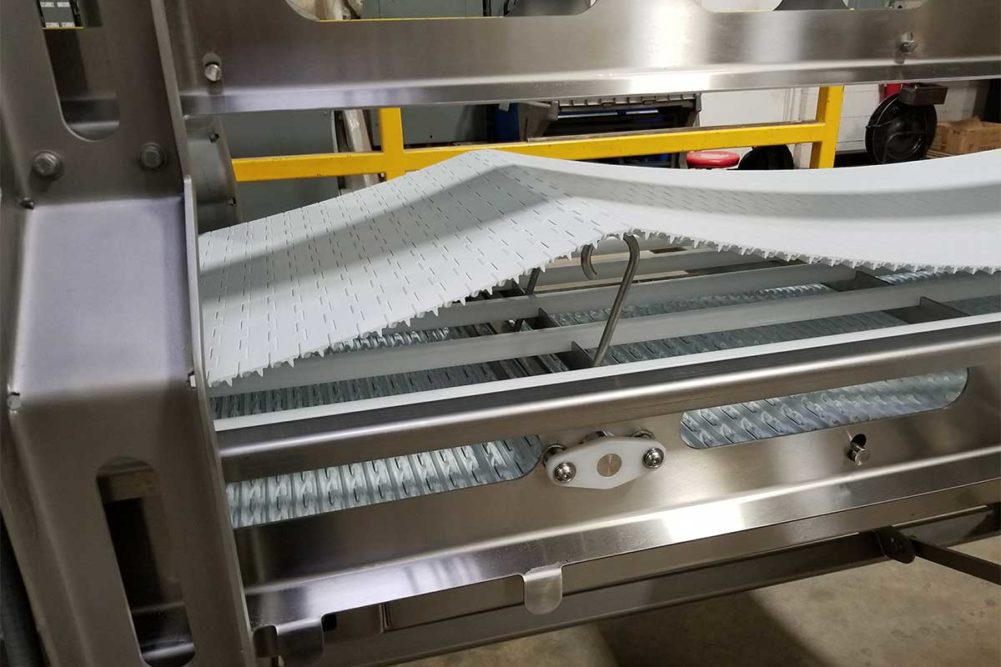Avoiding conveyor failure and unexpected downtime comes back to the need to properly maintain and sanitize them. This means adhering to preventative maintenance (PM) schedules and following recommendations for cleaning.
“We are seeing bakeries ‘run to failure’ due to a lack of available maintenance resources,” said Jeremy Shall, North America baking and snack team leader, Intralox. “Often, any proactive maintenance is prioritized to other critical equipment like ovens or proofers. This leads to ill-maintained conveyors.”
Not all bakeries are embracing washdown equipment, and not all equipment is getting fully cleaned, said Dan Regan, president, Custom Cut Metals.
“You have the concern there of buildup of raw material or the floor is covered in dust and baking materials, which can gum things up,” he said.
Detailed cleaning manuals and training can help improve sanitation’s effectiveness.
“It is not uncommon for superficial conveyor exterior spraying to overlook critical areas with substantial food contact, such as wear rails, the underside of the belt or other internal structures, resulting in residual debris post-sanitation,” pointed out John Diver, engineer, Eaglestone Equipment.
Jacob Sammauro, applications manager, Eaglestone Equipment, said improper maintenance training can lead to conveyor damage and failure.
“Some examples of poor maintenance are improper belt tensioning, modification to equipment without direction, failure to properly grease necessary fittings and bearings, improperly adjusting the speeds of equipment to beyond the designed rates, and the maintenance being done without proper shutdown and lockout procedures,” he said.
Yan Morin, engineering director, Rexfab, said that slowing down lines can help equipment last longer.
“Often we see bakers running conveyors at speeds that are way higher than required by the process,” he said. “Even a small diminution of speed can reduce the stress put on the belting by a lot.”
As bakeries struggle to fill positions, a lack of time and talent to perform maintenance on equipment makes it difficult for bakery teams to complete needed work.
“Smaller operators are struggling even more because they just don’t have the manpower to do it,” Regan said. “As you get into the larger operators, they want to keep running 24/7, so they don’t want to take the downtime, but then you run into issues where if you don’t have that scheduled downtime, the equipment is going to schedule it for you.”
Wide temperature swings can make running conveyors efficiently a challenge. Bakers must understand how to choose the best machinery for their products and keep them properly maintained to avoid costly downtime.
This article is an excerpt from the April 2024 issue of Baking & Snack. To read the entire feature on Conveyors, click here.






